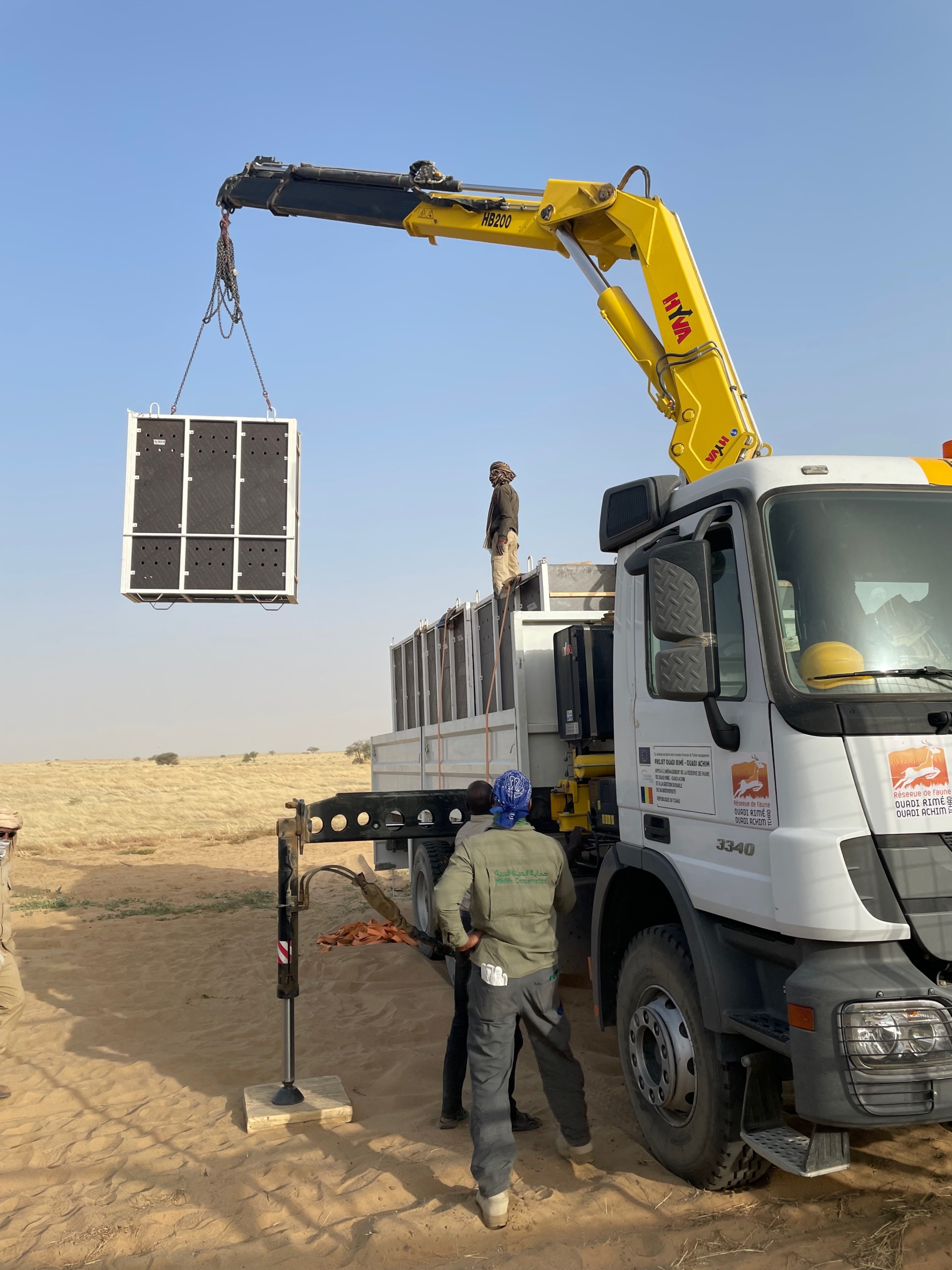Sandscript #30 – Translocation in conservation: to crate or not to crate?
Humans have been translocating animals around for thousands of years. Initially for food and fiber, more recently for conservation. Sometimes, this can be as simple as encouraging a herd to walk in the direction you need or putting a lead rope or leash on an animal and leading it where you need it to go.
Sometimes, particularly with wild hoofstock, it can be a lot more complicated than that!

Read here the fourth article of Sandscript 30th issue
For several years now, Sahara Conservation has participated in the translocation of three endangered hoofstock species, namely: scimitar-horned oryx, addax, and dama gazelles. The longest trips have been to bring animals into Chad from the herds that are held at the Environment Agency – Abu Dhabi (EAD) Deleika Conservation and Breeding Center facilities. This requires a lot of coordination and planning.
First, the animals selected for travel and eventual release need to be separated out from their herd at the EAD Deleika Conservation and Breeding Center. There, they undergo a physical exam by veterinary staff to ensure that they are healthy and safe to travel. Once cleared, these animals are ready for the trip to Chad via cargo plane.
In order to accomplish this, we can take advantage of one of the best characteristics of Saharian hoofstock. When placed in a small, dark space, most hoofstock will lie down and calmly wait for their next opportunity to move. Hoofstock crates, by design, are only large enough for the animal to stand and lie down, but not turn around. When bedded with hay, these narrow crates encourage the animal to lie down calmly within the darkened crate. Once the animals are secured in their crates, the crates can be loaded onto a truck and driven to the airport where they are loaded into the large cargo plane for the five-hour flight to Chad. Interestingly, since hoofstock tend to travel so well in darkened crates, sedation for flying is rarely needed when the animals can be moved by crate.
Sometimes, however, a crate is not feasible. This is a problem that has occurred while moving dama gazelles around within Chad. Dama gazelles may be a more fragile species than scimitar-horned oryx or addax, and therefore could be more prone to injury and stress related diseases. Because of this, it is sometimes necessary to move them via plane in country rather than truck to decrease the transport time over rough roads. However, due to the remote nature of the areas where dama gazelles are typically located, airstrips are often not able to tolerate planes that are large enough to hold full sized hoofstock crates. In these situations, veterinary help becomes critical.
In 2020 and again in 2022, several dama gazelles had to be flown from one location within Chad to another without the benefit of being confined in a crate. In order to do this safely, each animal had to be heavily sedated so that they would remain calm throughout the flight. For the drug protocol, this is a two-step process. First, the animals have to be removed from the crates they traveled the original portion of the trip in and anesthetized. Once the animals are asleep, they are hobbled into a recumbent position so that they will not be able to run if they are startled in the airplane. Blindfolds and earplugs are also applied to help with this. An intravenous catheter is placed in the jugular vein so that additional sedative drugs can be administered easily during the flight if needed. At this point, the animals are moved to the transport plane. Since prolonged anesthesia has some risks associated with it, the initial anesthesia drugs are reversed so that the animal is no longer fully asleep, and the sedation drugs are given in their place.
These sedation drugs will allow the animal to remain calm, but still awake, during the transport. While in flight, the veterinary team monitors the animal’s level of sedation carefully. If it appears that the animal is getting agitated, additional sedative drugs can be given to keep the animal calm throughout the flight. Once the animal arrives at the other end of the transport, these sedation drugs can be left in the animal’s system if needed, to help them adjust more smoothly to their new surroundings.
This may seem like a lot of work to move a few animals around, but the conservation impact of being able to do this can be huge! In the year 2000, the scimitar-horned oryx was declared Extinct in the Wild by the International Union for Conservation of Nature Red List. However, through the translocation of captive bred animals from all over the world, this species has now been reintroduced in the Ouadi Rimé-Ouadi Achim Game Reserve, Chad. These translocated animals have thrived and are now again reproducing on their own in the wild.
Similarly, the dama gazelle is one of the most Critically Endangered species on the planet with estimates of less than 200 individuals remaining in the wild. A very small remnant population of very high genetic diversity lives in the Manga region of Western Chad. However, because of the risks they are facing in the area and the small population size, these animals are unlikely to continue to propagate in the wild. By capturing and safely translocating several of the animals to a new breeding population, we can preserve the unique genetic makeup of the Manga damas and reintroduce that genetic variability back into the larger population for future generations.
Translocation really does have an important role to play in conservation today!
Julie Swenson
DVM, Dipl. ACZM
Associate Veterinarian
Fossil Rim Wildlife Center


